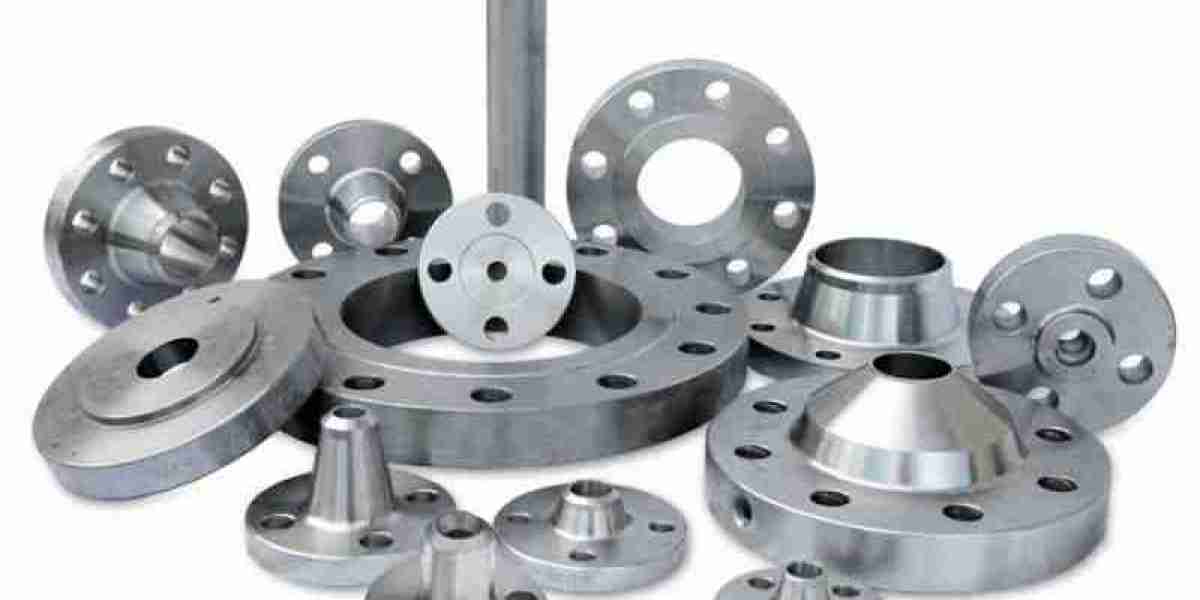Flanges play a crucial role in piping systems by connecting pipes, valves, and equipment while ensuring a secure and leak-proof connection. Among the many materials used in flange manufacturing, Flange S32750 stands out due to its superior mechanical strength, corrosion resistance, and durability.
In this blog, we will explore the different types of Flange S32750, their applications, and the benefits they offer across various industries.
1. What is S32750 Super Duplex Steel?
S32750 is a super duplex stainless steel known for its high strength and excellent resistance to corrosion, particularly in harsh environments like offshore, marine, and chemical industries. It contains a balanced mix of chromium, molybdenum, and nitrogen, providing:
High corrosion resistance against pitting and crevice corrosion
Superior strength compared to standard stainless steel
Good weldability and ease of fabrication
Resistance to stress corrosion cracking in aggressive conditions
Flanges made from S32750 Super Duplex Steel are highly durable and ideal for demanding industrial applications.
2. Types of S32750 Super Duplex Flanges
Flanges come in various designs to suit different pipeline requirements. Below are the most commonly used types of Flange S32750:
A. Weld Neck Flange (WNRF - Weld Neck Raised Face)
Description:
A Weld Neck Flange has a long, tapered hub that provides reinforcement and ensures a strong connection. It is welded to the pipe, creating a smooth flow transition and reducing stress concentration.
Best For:
- High-pressure pipelines
- Critical applications requiring strength and reliability
- Oil & gas, chemical, and power plants
B. Slip-On Flange (SORF - Slip-On Raised Face)
Description:
Slip-On Flanges have a slightly larger bore than the pipe, allowing them to slip over the pipe before welding. They are easier to align and install.
Best For:
- Low-pressure applications
- Water and air pipelines
- General industrial use
C. Blind Flange (BLRF - Blind Raised Face)
Description:
Blind Flanges are solid plates used to close off pipeline ends or pressure vessel openings. They allow easy access for future expansion or maintenance.
Best For:
- Sealing off pipe ends
- High-pressure systems
- Storage tanks and heat exchangers
D. Socket Weld Flange (SWRF - Socket Weld Raised Face)
Description:
Socket Weld Flanges have a socket where the pipe fits before welding. This creates a strong and smooth bore, improving fluid flow.
Best For:
- Small-diameter, high-pressure applications
- Chemical and food processing industries
- Fuel and gas pipelines
E. Threaded Flange (THRF - Threaded Raised Face)
Description:
Threaded Flanges have internal threads, allowing pipes to be screwed in without welding. They are useful in situations where welding is not feasible.
Best For:
- Low-pressure and non-critical applications
- Temporary pipeline connections
- Oil and gas installations
F. Lap Joint Flange (LJRF - Lap Joint Raised Face)
Description:
Lap Joint Flanges are used with stub-end fittings, allowing for easy alignment and disassembly. They are not welded directly to the pipe, making them ideal for systems requiring frequent maintenance.
Best For:
- Low-pressure systems
- Applications where frequent dismantling is needed
- Marine and offshore industries
G. Orifice Flange
Description:
Orifice Flanges are used in flow measurement systems. They come with drilled holes to accommodate orifice plates, allowing accurate fluid flow measurement.
Best For:
- Flow monitoring in pipelines
- Oil, gas, and chemical industries
- Metering applications
3. Benefits of Using S32750 Super Duplex Flanges
Flanges made from S32750 Super Duplex Steel provide numerous advantages over standard stainless steel and carbon steel flanges:
High Corrosion Resistance: Resistant to seawater, acids, and harsh chemicals.
Superior Strength: Twice the strength of standard stainless steel.
Excellent Weldability: Easily welded without compromising properties.
Extended Service Life: Withstands extreme temperatures and pressures.
Cost-Effective: Longer lifespan reduces replacement and maintenance costs.
4. Applications of Flange S32750
Due to their high strength and corrosion resistance, Flange S32750 is used in various industries, including:
Oil & Gas Industry: Pipelines, refineries, and offshore drilling rigs.
Chemical Processing: Handling aggressive acids and chemicals.
Marine & Shipbuilding: Saltwater-resistant piping systems.
Power Generation: Steam turbines and cooling systems.
Desalination Plants: Efficient transport of highly corrosive saltwater.
5. How to Choose the Right S32750 Super Duplex Flange?
When selecting a Flange S32750, consider the following factors:
Application Requirements: Choose the right type based on pressure and temperature needs.
Standard Compliance: Ensure the flange meets international standards like ASTM A182, ASME B16.5, and ANSI.
Material Quality: Opt for trusted suppliers who provide high-quality Super Duplex flanges.
Testing & Certification: Look for products with mill test certificates (MTC) to verify material properties.
Conclusion
Flange S32750 is a top choice for industries that demand strength, durability, and corrosion resistance. With various types available, selecting the right flange depends on the specific needs of your piping system.
By choosing high-quality S32750 Super Duplex Flanges, you ensure long-term performance, reliability, and cost savings in critical applications.






